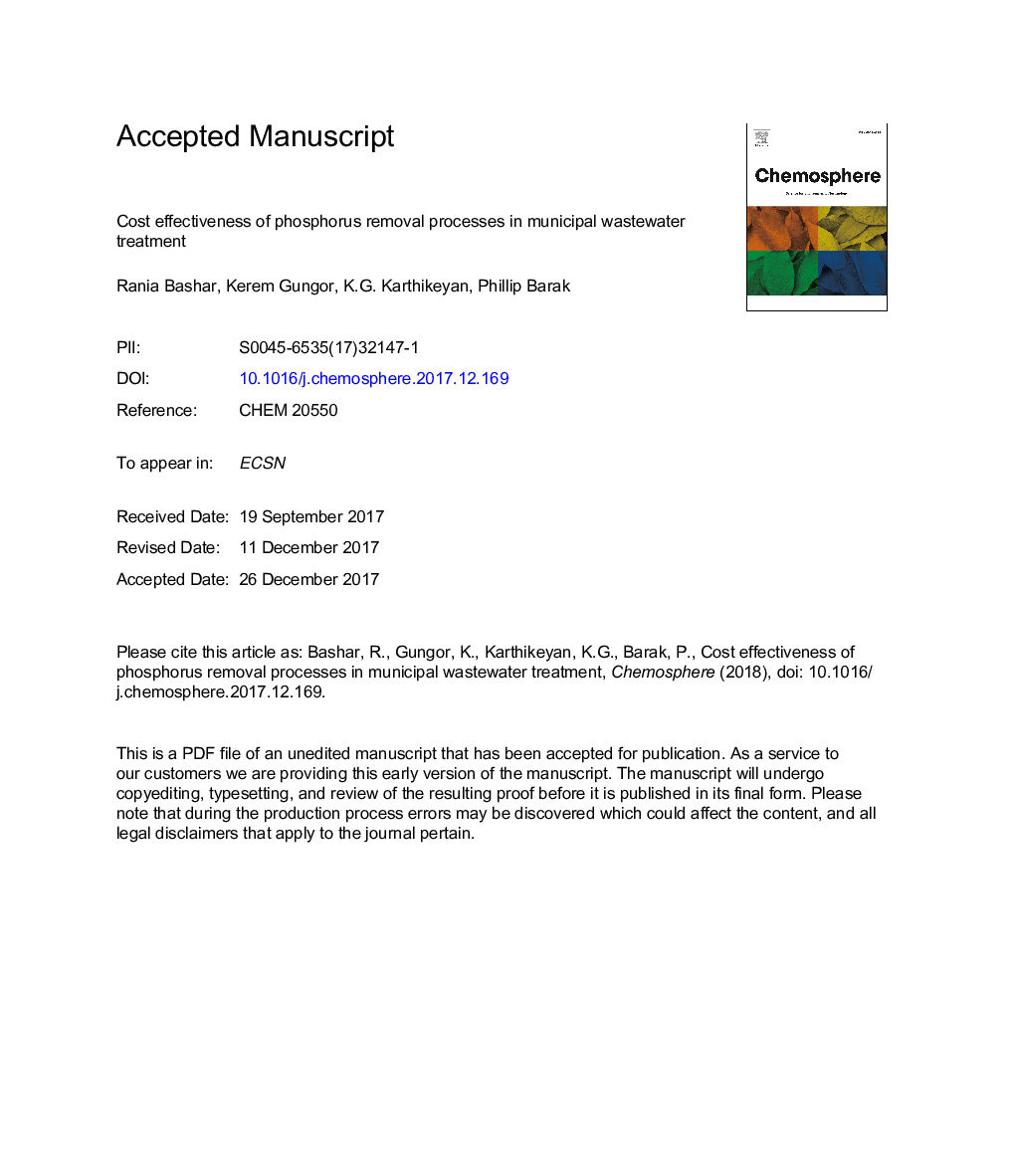| Article ID | Journal | Published Year | Pages | File Type |
|---|---|---|---|---|
| 8852095 | Chemosphere | 2018 | 35 Pages |
Abstract
Meeting stringent phosphorus (P) discharge standards remains one of the major challenges for wastewater utilities due to increased economic burdens associated with advanced (i.e., secondary, tertiary) treatment processes. In a trade-off between higher treatment cost and enhanced P removal, it is critical for the treatment plants to be able to select the most appropriate technology. To this end, established/emerging high performing P removal/recovery technologies (e.g., Modified University of Cape Towne process, Bardenpho process, membrane bioreactors, IFAS-EBPR, struvite recovery, tertiary reactive media filtration) were identified and full-scale treatment plant designs were developed. Using advanced mathematical modeling techniques, six different treatment configurations were evaluated in terms of performance and cost effectiveness ($/lb of P removed). Results show that the unit cost for P removal in different treatment alternatives range from $42.22 to $60.88 per lb of P removed. The MUCT BNRÂ +Â tertiary reactive media filtration proved to be one of the most cost effective configurations ($44.04/lb P removed) delivering an effluent with total P (TP) concentration of only 0.05Â mg/L. Although struvite recovery resulted in significant reduction in biosolids P, the decrease in effluent TP was not sufficient to meet very stringent discharge standards.
Related Topics
Life Sciences
Environmental Science
Environmental Chemistry
Authors
Rania Bashar, Kerem Gungor, K.G. Karthikeyan, Phillip Barak,
